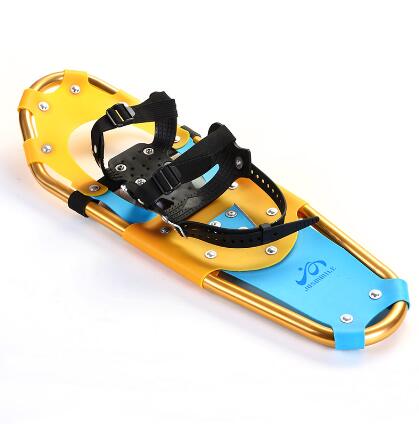Crafting Confidence: The Manufacturing Process Behind Aluminum Alloy Terrain Snowshoes
2023-12-27
Introduction:
As winter enthusiasts gear up for snowy escapades, the reliability and performance of their equipment become paramount. Among the key players in the snowshoe arena is the aluminum alloy terrain snowshoe, a marvel of engineering. In this blog, we'll delve into the intricate manufacturing process behind these snowshoes, shedding light on how each step contributes to their exceptional performance and reliability in diverse terrains.
1. Material Selection:
- The process begins with the careful selection of the aluminum alloy. The choice of a specific alloy, such as 6061 or 7075, is a crucial decision, as it dictates the snowshoes' strength, weight, and durability. This meticulous selection sets the foundation for a high-performance product.
2. Extrusion and Shaping:
- The chosen aluminum alloy is subjected to extrusion, a process where it is heated and forced through a die to create the desired shape. For terrain snowshoes, the frames often feature tubular designs, providing strength while keeping the overall weight in check. The extrusion process allows for precise shaping, optimizing the frame for performance.
3. Heat Treatment:
- Heat treatment is a critical step to enhance the strength and hardness of the aluminum alloy. This process involves subjecting the extruded frames to controlled heating and cooling cycles. The result is a material with improved mechanical properties, ensuring the snowshoes can withstand the rigors of challenging terrains.
4. Anodizing for Corrosion Resistance:
- To fortify the aluminum alloy against corrosion, many manufacturers employ anodizing. The frames undergo an anodization process, creating a protective oxide layer on the surface. This layer acts as a shield against the corrosive effects of snow, ice, and other environmental factors, contributing to the snowshoes' longevity.
5. Precision Machining for Components:
- Various components, such as bindings, crampons, and adjustment mechanisms, undergo precision machining. This ensures that each part fits seamlessly with the aluminum frame, promoting reliability and durability. The precision in manufacturing contributes to the overall structural integrity of the snowshoes.
6. Innovative Design Integration:
- The manufacturing process allows for the integration of innovative design features. Engineers and designers can optimize the frame's shape, rocker profile, and weight distribution for enhanced performance in specific terrains. This design integration contributes to the snowshoes' adaptability and versatility.
7. Quality Control and Testing:
- Stringent quality control measures are implemented throughout the manufacturing process. Each pair of snowshoes undergoes rigorous testing to ensure that they meet or exceed industry standards. This includes load testing, stress testing, and assessments of overall durability. Only after passing these tests do the snowshoes move on to the next stage.
8. Assembly and Final Inspection:
- The various components are assembled with precision, and a final inspection is conducted to ensure that every detail meets the manufacturer's specifications. This meticulous assembly process guarantees that each pair of snowshoes is ready to perform reliably in the harshest winter conditions.
Conclusion:
The manufacturing process of aluminum alloy terrain snowshoes is a blend of science, technology, and craftsmanship. From material selection to precision machining and innovative design, each step contributes to the creation of high-performance snowshoes that enthusiasts can trust in the most challenging winter landscapes. As you embark on your next snowy adventure, remember that behind every step is a commitment to crafting confidence and reliability for winter explorers.


